Open Contracting in Nepal: Could it be a game changer?
No one would disagree with the fact that proactive disclosure of public contracts by public agencies improves service delivery, curbs corruption, and helps monitoring. Laura Bacon says open contracting could be a game changer.
Most public agencies in Nepal have their own e-procurement portals, designed to facilitate bids. You can also find tender information and awarded contracts in these portals. Contract data is present to some extent in these portals, but they are not in an easily-accessible open format. Also, multiple portals means we never get the real picture of all contracts in Nepal. If all contract information from multiple portals were integrated, it would be possible to, for instance, see the total monetary value of contracts being implemented in Dailekh district, or to know which contractor has the most contracts in 2014 in Parsa district. Opening up contract information would give a whole new perspective on the situations of contracts.
The open contracting portal for Nepal has yet to be released. However, below are a series of screenshots to give you a feel of the system. We can see the number of contracts in different districts, along with various indicators like the Poverty Index, which gives insight on how contractual activities are being carried out.
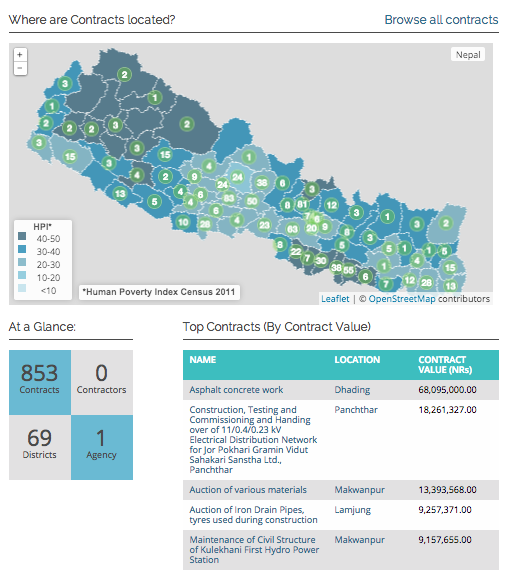
We can also see which categories have the highest contract value, and their distribution year-over-year.
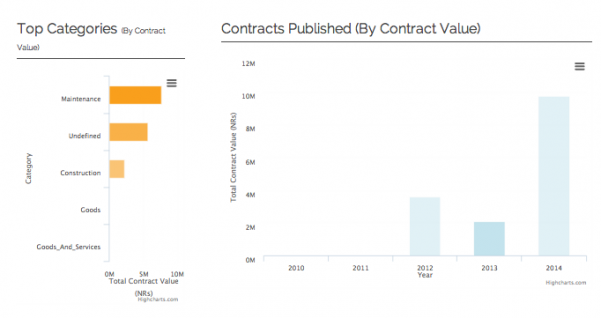
For any given category, we can view how the contracts are disbursed in various districts.
The portal is just a start, and doesn’t provide all of the possible analyses of these contracts. However, the data will be available in open format for those who want to delve into more detail to derive deeper insights.
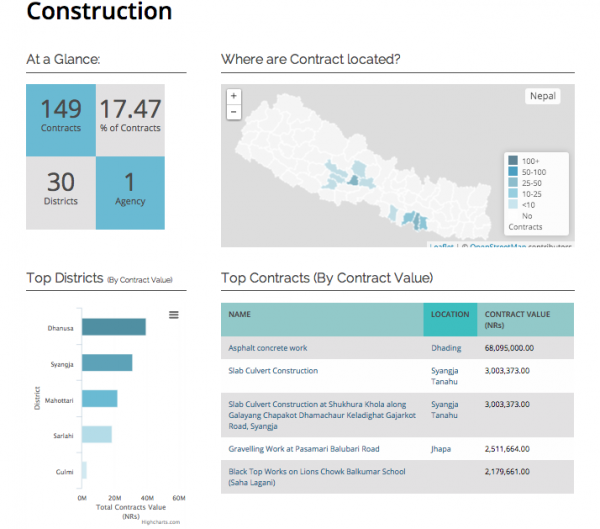
So far, the portal doesn’t include all contracts executed in Nepal. Only three public agency portals — Department of Roads, Nepal Electricity Authority, and Department of Local Infrastructure Development and Agricultural Roads — are included. It will take time to integrate all tenders from these portals as well. But even with such a limited number of agencies and contracts, we can already derive interesting insights. Imagine when we will be able to see the entire picture of active and historical contracts in Nepal? Do you think it could be a game changer? Only time will tell.
The public portal will be released on September 22nd, 2014.
This is a modified version of a post originally published on Open Nepal’s blog, authored by Anjesh Tuladhar
Share This Post
Related from our library

Building a Sustainable Cashew Sector in West Africa Through Data and Collaboration
Cashew-IN project came to an end in August 2024 after four years of working with government agencies, producers, traders, processors, and development partners in the five implementing countries to co-create an online tool aimed to inform, support, promote, and strengthen Africa’s cashew industry. This blog outlines some of the key project highlights, including some of the challenges we faced, lessons learned, success stories, and identified opportunities for a more competitive cashew sector in West Africa.
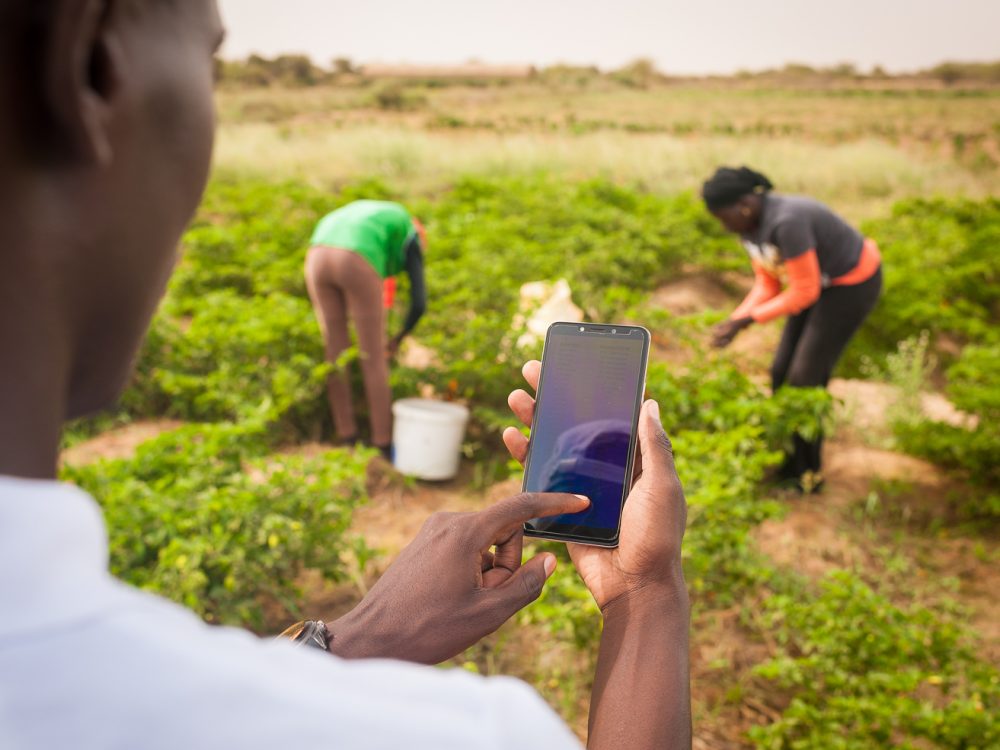
Digital Transformation for Public Value: Development Gateway’s Insights from Agriculture & Open Contracting
In today’s fast-evolving world, governments and public organizations are under more pressure than ever before to deliver efficient, transparent services that align with public expectations. In this blog, we delve into the key concepts behind digital transformation and how it can enhance public value by promoting transparency, informing policy, and supporting evidence-based decision-making.
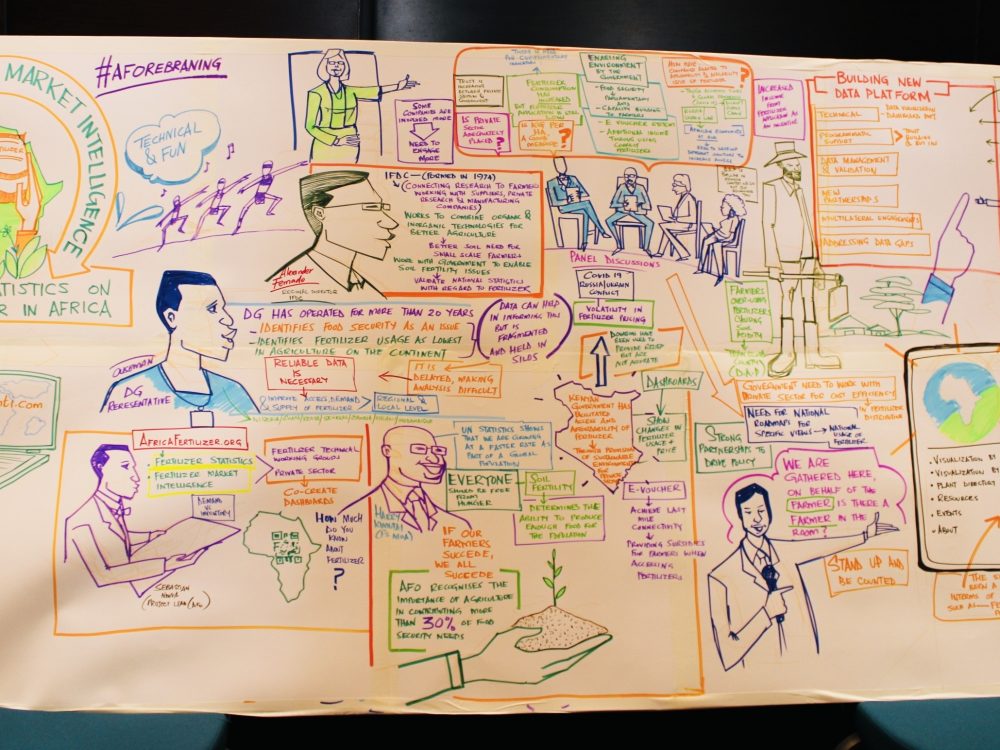
From Data Gaps to Impact: Key Insights from the VIFAA Program
Over the last six years, DG, together with its partners AfricaFertilizer (AFO) and Wallace & Associates, collaborated to implement the Visualizing Insights on Fertilizer for African Agriculture (VIFAA) Program. In the program’s final year (2024), the team undertook a “program learning process” to reflect on outcomes, challenges, and successes through internal interviews. This blog captures five key learnings, which we hope will guide similar programs aiming to bridge data gaps in agricultural development.